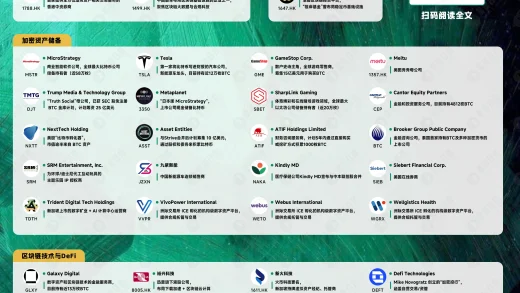I. Industry Risk Analysis
(1) Policy Risk
The metal door and window insulation material industry is currently in the cross – period of policy implementation and evaluation adjustment. Entrepreneurs are faced with compliance risks caused by the rapid iteration of policy standards: Energy – saving and environmental protection policies (such as the new national standard for building energy efficiency and the material carbon footprint accounting system) are accelerating the elimination of backward technologies. Small and medium – sized enterprises are under pressure on their capital chains in terms of R & D investment and process transformation. The difference in local environmental protection law enforcement intensity leads to fluctuations in the stability of the supply chain. Some upstream suppliers may stop production due to surprise inspections, which raises the procurement cost of raw materials. During the adjustment period of fiscal subsidy policies (such as the decline of subsidies for green building material certification), the profit margins of enterprises are compressed. If enterprises fail to track the policy window period in time and layout alternative plans, they may miss the market access qualification due to the lag of technology certification. Under the dual – carbon goal, the frequency of policy changes is accelerating. Enterprises lacking a policy prediction mechanism will face the risk of strategic misjudgment.
(2) Economic Risk
The metal door and window insulation material industry is currently facing compound risks brought about by the downward economic cycle: During the economic expansion period, the demand from the real estate and infrastructure sectors drives the growth of the industry. However, the current slowdown of the global economic growth rate and the tightening of domestic real estate regulation directly suppress the demand in the terminal market. The prices of raw materials remain high due to the fluctuations of bulk commodities and supply chain disruptions. Coupled with the increasing bargaining power of downstream customers, the profit margins are squeezed from both sides. In the period of rising interest rates, the financing cost is rising. The heavy – asset nature of the industry puts pressure on cash flow. A decline in inventory turnover efficiency may trigger a liquidity crisis. If the economy falls into a deep recession, small and medium – sized manufacturers will face the risk of their market share being squeezed by leading enterprises through low – price strategies, and the probability of industry reshuffle will increase.
(3) Social Risk
The metal door and window insulation material industry is facing a significant risk of generational demand break. The consumer group mainly composed of Generation Z pays more attention to environmental protection performance and intelligent integration attributes. However, traditional door and window enterprises are mostly led by decision – makers born in the 1960s and 1970s, and their product R & D still focuses on physical performance parameters and cost control. This has led to the current industry situation where the green building material certification rate is insufficient and the intelligent penetration rate is less than 10%. At the same time, the new – generation consumers have a weak perception of brand value, and the market education cost is rising. The window period for technological upgrading and supply chain reconstruction is shrinking. If enterprises cannot complete low – carbon transformation and digital service link construction within three years, they will face the dual pressure of continuous loss of the young consumer market and policy compliance risks.
(4) Legal Risk
The metal door and window insulation material industry is facing multiple legal risks: The tightening of environmental protection regulations requires that the production process must meet emission standards (such as VOC treatment). Violations will face high – value fines or production suspension. Product quality must strictly follow the national standard (such as GB/T 8478 – 2020). If the insulation performance fails to meet the standard, it may trigger liability under the Product Quality Law. The risk of patent infringement is prominent (especially in the R & D of composite insulation materials). Improper use of third – party technologies will trigger intellectual property litigation. The new fire – prevention regulations put forward higher requirements for the flame – retardant grade of materials (such as GB 8624 – 2012). The lack of product certification may lead to the failure of project acceptance. In the labor – intensive production mode, labor compliance (occupational disease prevention/ safety in production) needs to be improved. Otherwise, it is easy to trigger labor supervision penalties.
II. Entrepreneurship Guide
(1) Suggestions on Entrepreneurship Opportunities
In the current metal door and window insulation material industry, the policies for energy – saving buildings have promoted a surge in market demand. Entrepreneurs can enter the R & D of high – performance materials (such as aerogels and vacuum glass substitutes), customized services in regional sinking markets (insulation upgrading of old residential areas and rural self – built houses), and lightweight integration of the supply chain (providing “materials + installation” package solutions in cooperation with regional door and window factories). Focus on the renovation scenarios of existing buildings, develop standardized insulation component kits suitable for different climate zones to lower the construction threshold. At the same time, layout the B – end building material distributor channels, and rely on the green building certification system promoted by policy subsidies to quickly establish regional brand recognition.
(2) Suggestions on Entrepreneurship Resources
Focus on core resources. First, establish long – term cooperation with aluminum suppliers and contract manufacturers with environmental protection certifications to reduce procurement and production costs. Integrate the technical support of university material laboratories or scientific research institutions to promote the upgrading of product insulation performance. Connect with leading real estate developers and door and window enterprises through industry associations to quickly enter the B – end supply chain. Apply for green building material subsidies from local governments and high – tech enterprise qualifications to obtain tax incentives and policy support. Use regional building material exhibitions and online vertical platforms to expand the distributor network at low cost, and at the same time accumulate feedback from terminal customers to optimize product iteration.
(3) Suggestions on Entrepreneurship Teams
Entrepreneurs in the metal door and window insulation material industry should build a composite team. First, recruit core members with experience in material R & D, production process optimization, and building industry channel resources. The founding team should include at least one engineer familiar with the national standard for doors and windows GB/T 8478 – 2020, and a sales leader with experience in developing B2B large – scale customers. Implement a dual – leadership system of “technology + market”. It is recommended to adopt a flat project – based management to strengthen cross – departmental collaboration. Establish a performance appraisal system based on three indicators: product yield rate, order delivery cycle, and customer repurchase rate. Regularly conduct ASTM standard interpretation and engineering case reviews. Reserve 15% – 20% of the equity pool for the subsequent introduction of thermal calculation experts or curtain wall experts.
(4) Suggestions on Entrepreneurship Risks
Entrepreneurs in the metal door and window insulation material industry need to focus on controlling three major risks: First, the risk of supply chain fluctuations. First, sign long – term agreements with upstream aluminum and broken – bridge profile suppliers and establish a reserve supplier database. Control the raw material cost within 45% of the total cost. Second, the risk of technology compliance. Invest no less than 3% of the revenue in R & D funds to obtain the 65% building energy – saving standard certification. It is recommended to choose composite insulation materials with phase – change energy – storage technology as a breakthrough. Third, the risk of channel expansion. Reach strategic cooperation with design institutes through the BIM building information model, and at the same time expand the old window renovation market (accounting for no less than 40%). It is recommended to pilot the “materials + installation + warranty” package model to reduce customer acquisition costs.





